Commentary
Nehrustan Implements Minimum Wage Law
TRIKONE
Dec 06, 2011, 02:54 AM | Updated Apr 29, 2016, 02:44 PM IST
Save & read from anywhere!
Bookmark stories for easy access on any device or the Swarajya app.
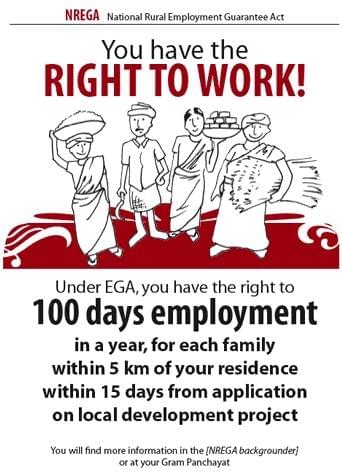
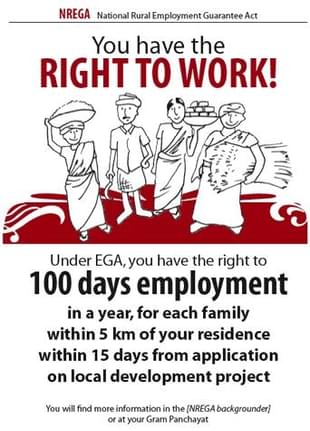
Many years ago and after innumerable debates, the Government of Nehrustan, Mr. Bambani (who owns a textile mill) and Mr. Kirana (the shop owner who sells Bambani Industries’ products) convinced the remaining 8 citizens that allowing Wal-Mart to enter Nehrustan will hurt Mr. Kirana’s & Mr. Bambani’s respective businesses as Wal-Mart will sell the same products for less. As a result, the remaining 8 agreed to shell out more money to keep Mr. Kirana and Mr. Bambani in business. Yes, that’s right.

Although Nehrustan’s first prime minister, Mr. Lal Jawahari (pronounced Al Jawahari) never allowed FDI in the kirana store sector, his daughter, late Mrs. Andhi permitted FDI in some strategic sectors. But that’s a discussion for another day.
Now after all these years, Nehrustan is again at the cross roads as it debates implementing a minimum wage law that would require employers to pay its workers a minimum of Rs 250 per month. To move forward in this direction, the Government of Nehrustan has bestowed upon me, the responsibility to seek citizen feedback on the proposed minimum wage law.
My sources tell me that this decision was taken in light of threats issued by a key coalition ally and firebrand leader Ms Mao’s Mummyjee, who has threatened to pull out of the government if it does not implement the minimum wage law. Ms Mummyjee’s concern is exploitation of industrial and domestic workers, a concern also shared by a group of intellectuals working under the umbrella organization, Narniya Advisory Concil. My sources also tell me that Prime Minister Mann Beiman Singh does not want to implement this law and that the views of party President, Ms Narniya Andhi, are not known.
As a pilot project, the Government intends to implement the minimum wage law in Indirapur, a small city on the western coast of Nehrustan. Although it’s not relevant to the issue at hand, readers may like to know that rich and famous of this City live in the posh Sonjaville neighborhood while the rest live in Kalavatinagar. More information on the residents of Indirapur is presented in Table 1. Table 1 also shows income for each resident for the month of January.
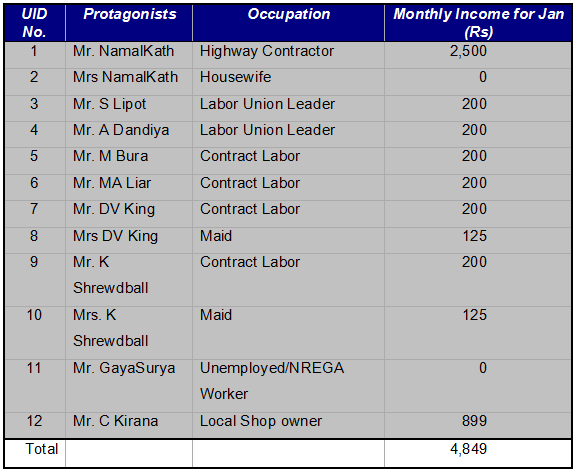
I contacted critics of this law who strongly voiced their concerns. One such critic responded with the following argument.
“The proposed minimum wage law is going to wreak havoc on the weaker workers. Consider this. In Indirapur, Mrs NamalKath has employed Mrs King and Mrs Shrewdball as maids. She pays them Rs 125 each. Let’s see what happens after this law is implemented as against if its not.
Scenario 1: With Minimum Wage Law
Once this law comes into effect, Mrs. NamalKath will have to let either Mrs King or Mrs Shrewdball go because the cost of employing both of them would now be Rs 500, twice of what she pays currently. According my sources, Mrs NamalKath is likely to let Mrs Shrewdball go because I am told the latter’s work is virtually notional. That is not all. Mr NamalKath just won a new Rs 1,100 contract from the Municipal Corporation of Indirapur which requires him to finish the work in one month. If the minimum wage bill is passed, Mr. NamalKath can only employ only 4 workers (Rs 250 x 4 = Rs 1,000), as he pockets Rs 100 as profit (or 10%). Union leaders Mr. Lipot and Mr. Dandiya obviously select themselves leaving the other four to fight for two vacancies. That means a total of 4 workers could be unemployed in February if this law is passed. Table 2 summarizes the incomes for residents of Indirapur under this scenario.
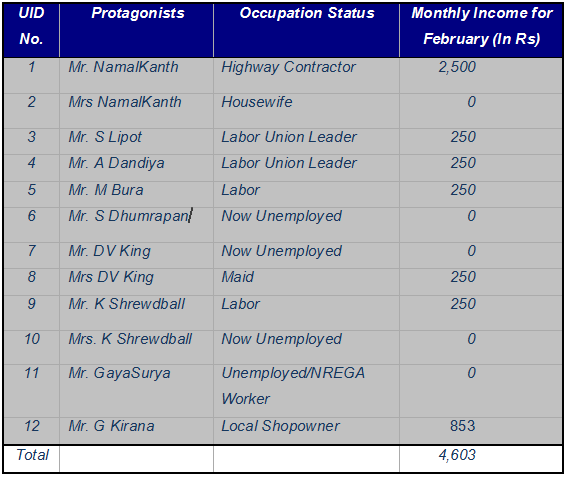
Under Scenario 1, Indirapur’s income drops 5.1% in February even as the top two richest person and the labor union leaders still make the same. As you can see, this minimum wage law will hurt only the poor not Mr. NamalKath, the richest person in town, not the store owner Mr. Kirana and not even the labor union leaders. Another important thing to consider is that exploitation will likely increase if this law is passed because one month’s work will have to be completed by 4 workers.
Gini coefficient is usually considered a good measure of income disparity. Higher the Gini coefficient, higher is the income disparity. The Gini coefficient for Scenario 1 is 1.09. Now let’s look at Scenario 2.
Scenario 2: Without Minimum Wage Law
In the absence of this law, Mr. NamalKath can employ any number of people he wants, even all 7 (even the NREGA worker) if he wants. This means he can distribute the work load a little more evenly. This scenario is summarized in Table 3.

As you can see, the overall income for Indirapur drops 5.1%; the same as Scenario 1 (if the law is passed). However, what’s important to note is that the Gini coefficient drops to 1.03.
In summary, if the law is not going to change the overall income levels, but will increase income disparity and unemployment, do we need it? Tell me Monsoon, do we need this law?”
I am really confused. I have heard arguments both for and against this law but I still don’t know what I should report back to the government. That is why, I, ace journalist, Monsoon Hut, ask you the reader, what should I tell them?
Follow Monsoon Hut (@mhut) on microblogging site Croaker. Read what Croakeratti are saying on this proposed law.
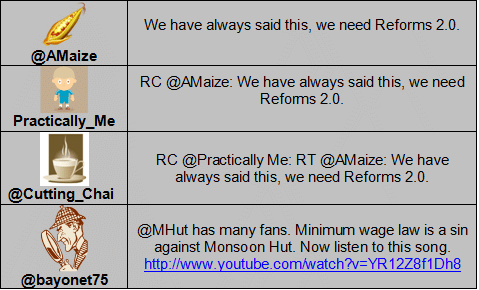
10 readers who read this column also read: 76 year old youth icon Amulya Baby learns to ride a bicyle.
Disclaimer: All characters in this blog are completely fictitious. Resemblance to any person, living, dead, assassinated, KGB agents or antique smuggler is purely coincidental. And hey, only kidding!






